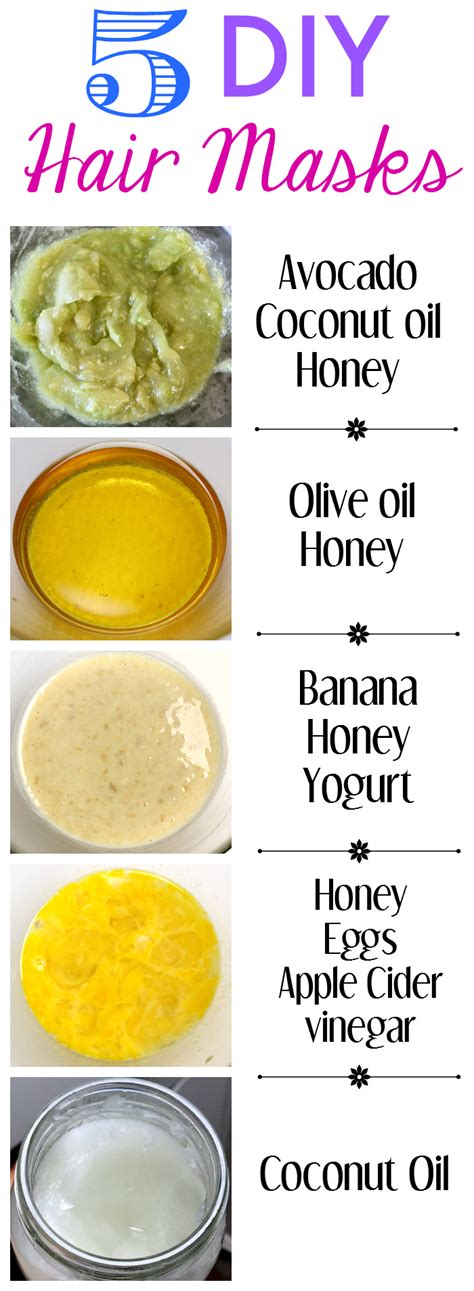Introduction
Hair masks are an essential part of any hair care routine, providing deep nourishment and hydration to revitalize and strengthen hair. While store-bought masks can be effective, making your own hair mask at home offers several advantages:

- Customization: Tailor the ingredients to your specific hair needs and preferences.
- Affordability: DIY masks are typically more cost-effective than commercial products.
- Freshness: Use fresh, natural ingredients for maximum potency and nourishment.
Types of Hair Masks
Hair masks can be categorized based on their primary benefits:
- Moisturizing masks: Hydrate and soften dry, brittle hair.
- Nourishing masks: Provide essential nutrients for healthy hair growth and strength.
- Repairing masks: Restore damaged hair, reduce frizz, and improve elasticity.
- Volumizing masks: Add volume and body to thin, flat hair.
DIY Hair Mask Recipes
1. Banana and Yogurt Mask (Moisturizing)
- 1 ripe banana, mashed
- 1/2 cup plain yogurt
Combine the banana and yogurt in a bowl and apply to damp hair. Leave on for 15-20 minutes before rinsing.
2. Avocado and Honey Mask (Nourishing)
- 1/2 ripe avocado, mashed
- 1 tablespoon honey
Mash the avocado and honey together. Apply to dry hair and leave on for 30 minutes. Rinse with cool water.
3. Coconut Milk and Argan Oil Mask (Repairing)
- 1/2 cup coconut milk
- 1 tablespoon argan oil
Warm the coconut milk slightly and add the argan oil. Apply to damp hair and leave on for 20-30 minutes. Rinse with warm water.
4. Oatmeal and Apple Cider Vinegar Mask (Volumizing)
- 1/2 cup cooked oatmeal
- 1/4 cup apple cider vinegar
Combine the oatmeal and apple cider vinegar. Apply to damp hair and massage into the scalp. Leave on for 15-20 minutes before rinsing.
Tables: DIY Hair Mask Compositions
| Mask Type | Ingredients | Benefits |
|---|---|---|
| Moisturizing | Banana, yogurt | Hydrates and softens |
| Nourishing | Avocado, honey | Provides essential nutrients |
| Repairing | Coconut milk, argan oil | Restores damaged hair |
| Volumizing | Oatmeal, apple cider vinegar | Adds volume and body |
Table: Hair Mask Benefits
| Benefit | Examples |
|---|---|
| Hydration | Banana, yogurt, avocado |
| Nourishment | Honey, coconut milk, argan oil |
| Repair | Coconut milk, argan oil, oatmeal |
| Volume | Oatmeal, apple cider vinegar |
Tips for Making and Using Hair Masks
- Use fresh, ripe ingredients: This ensures maximum potency and nourishment.
- Test a small amount: Apply a small amount of the mask to a patch of skin on your arm to check for allergic reactions.
- Apply to damp hair: This helps the mask penetrate the hair shaft effectively.
- Cover your hair: Use a shower cap or plastic wrap to trap heat and enhance absorption.
- Leave on for the recommended time: This allows the mask to work its magic.
- Rinse thoroughly: Remove all residue to avoid product buildup.
- Condition afterwards: Follow with a conditioner to lock in moisture and enhance shine.
Conclusion
Making your own hair masks at home is a simple and cost-effective way to achieve healthy, beautiful hair. By customizing the ingredients to your specific needs, you can create a targeted treatment that nourishes, repairs, or volumizes your hair. Experiment with different recipes to discover the perfect mask for your hair type and needs.
